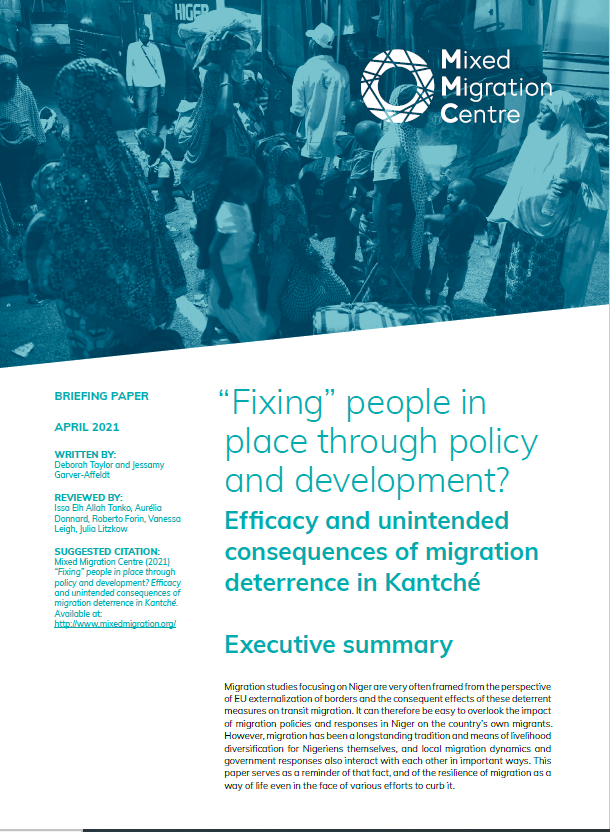
“Fixing” people in place through policy and development?
Efficacy and unintended consequences of migration deterrence in Kantché
On 30 October 2013, the bodies of 92 people, including 32 women and 48 children, were found in the northern Nigerien desert, about ten kilometers from the border with Algeria. The majority of these migrants had come from the Department of Kantché in Niger’s southern Zinder region, and their vehicles had broken down, leaving them stranded for days. Their deaths made headlines in Niger and beyond, and grabbed the attention of the Nigerien government, which expressed its desire to counter the phenomenon seen in Kantché of substantial migration of women and children to Algeria. This tragedy marked a turning point in the Government of Niger’s approach to migration, which became increasingly restrictive, and not only due to external pressure from European donors. There was also increased attention paid by development actors to Kantché, and a shift towards development projects incorporating migration management elements. This briefing paper explores the efficacy of these measures and the consequences – at times unintended – they have had on migration from Kantché.
Download

